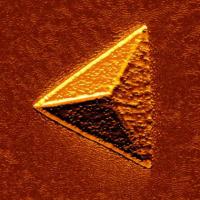|
At the beginning of the 90ies a concept paper has
been developed by the physics department, which codyfied the
importance of nanosciences for the physics faculty and its long-term
development. With the limited number of eight professors in the
physics department it was clear that it will not be possible even on
the long run to cover all areas of physics in the same way. On the
other hand the authors of this studies stated clearly that a focusing
on a topical area with a longe-term perspective will bring important
advantages for the future development of the physics department as
well as of the whole natural science faculty. Due to the at that time
predominant areas of research in Linz it was soon clear that the just
developing area of nanoscience and -technology not only showed great
potential for future development but also was compatible with most of
the research areas in Linz.
Already at that time the available number of topics and research
methody with a connection to the just evolving nanosciences was
remarkable: At the institutes for semiconductor- and solid states
physics semiconductorhetero- and nanostructures have been produced,
stucturized and characterized, while persuing the top-down as well as
the bottom-up approach. The institue for applied physics researched
laser-based methods for structurisation, which can be used to deposit
nm thick films of complex organic compounds in an intact way. In the
institute for biophysics several advanced analytical methods were used
to investigate functional groups on living cells and thus an
experimental approach to biological bottum-up systems was made. Also
at that time the institute of atomic and nuclear physics used methods
of surface physics and in the area of theoretical physics a lot of
cooperations and connecting factors to other groups existed.
According to the variety of topics in the area of nanoscience soon
common areas of interest, possibilities for cooperation and synergies
have been found. Strategies for the replacement of vacant
professorships and combined infrastructural measures have been devised
to lead to a closer crosslinking and formation of a common main focus
in the physics department.
During the evaluation of the physics faculty at the beginning of the
90ies the nano-conceptpaper was judged very positively. In the
following years it served as a giudeline for several replacements and
has been followed in connection with its infrastructural
implications. Furthermore also in other research areas aside from
physics stepts in the direction of nanoscience and -technology, which
lead during the 1990ies to the amount of expertise now available in
Linz in this area.
|

